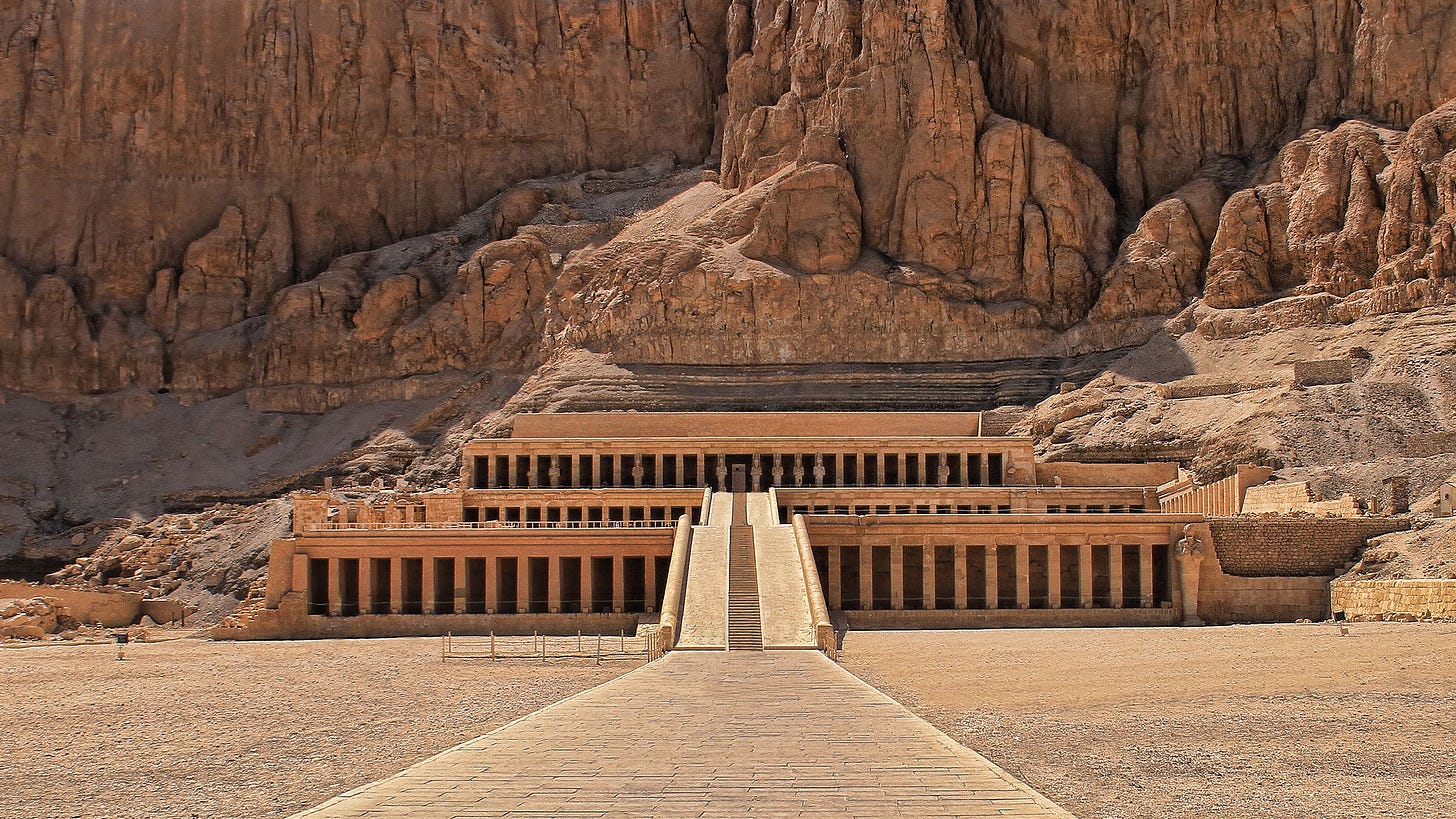Boat Building in Egypt During the Reign of Hatshepsut
Featured in Ships, Stings and Wedding Rings by Jodi Taylor
AI-generated audio has been added for accessibility.
The reign of Queen Hatshepsut, who ruled Egypt during the 18th Dynasty from around 1479 to 1458 BC, is one of the most fascinating periods in ancient Egyptian history. Known for her ambitious building projects and trade expeditions, Hatshepsut’s time on the throne was marked by a remarkable expansion in the arts and industry. One of her reign’s most significant technological advancements was in the field of boat-building. This was crucial not only for military and transport purposes but also for the famous expedition to Punt, which Hatshepsut ordered in her 9th regnal year.
Boats had always played an essential role in Egyptian life. The Nile River, the lifeblood of the civilization, facilitated the transport of goods, people, and military forces across Egypt’s vast landscapes. From early antiquity, boats were used for everything from agriculture to war. By the time of Hatshepsut’s reign, boat-building had evolved into a sophisticated and highly specialised craft.
The ancient Egyptians were masters of constructing boats that were not only functional but also enduring. Wood, especially from sycamore, was the primary material used in their construction. The development of various vessel types, such as reed boats, flat-bottomed boats for river transport, and larger seafaring ships, exemplify their ingenuity.
One of the most famous aspects of Hatshepsut’s reign is her expedition to the land of Punt, a distant region believed to be located somewhere along the coast of the Red Sea, possibly in modern-day Somalia or Eritrea. This expedition, documented in vivid detail on the walls of her mortuary temple at Deir el-Bahari, was not only a symbol of her success as a ruler but also highlighted the advanced state of Egyptian shipbuilding during her time.
The boats for the Punt expedition were monumental. They were large, sea-going vessels capable of making the long, perilous journey across the Red Sea. The ships were described as being “great ships” with a structure that allowed them to carry large amounts of cargo, including exotic goods like myrrh, incense, gold, and ivory, back to Egypt.
Archaeological evidence, such as the detailed reliefs on the temple walls, shows that these boats were outfitted with masts and sails, indicating that Egyptian shipbuilding had progressed from simply using oars to incorporating wind power for longer voyages. The boats were also equipped with large decks, which allowed for the storage of both the precious cargo and the crew.

Under Hatshepsut, boat construction underwent significant refinement. Egyptian shipbuilders during this period mastered techniques such as plank-on-frame construction, which enabled the creation of larger and more durable vessels. The boats for the Punt expedition, in particular, reflect the high level of skill required to craft such a sophisticated and long-distance vessel. The use of pitch to seal the wood and prevent leaks, along with the careful fitting of wooden planks, ensured the vessels could withstand the harsh conditions of the sea.
Additionally, the use of both sails and oars in these boats represents a blending of technological advancements. The sails allowed for the boats to travel with the wind, while the oars provided the necessary propulsion when wind conditions were not favourable. This combination of power sources allowed Egyptian ships to be more versatile and reliable for long voyages, such as the journey to Punt.
Hatshepsut’s contributions to boat-building did not only impact her own reign but on later Egyptian maritime capabilities. The success of the Punt expedition cemented her reputation as a ruler who could expand Egypt’s reach beyond its borders, both economically and politically. The ships used in her reign continued to serve as models for future generations of shipbuilders in Egypt.
The legacy of Hatshepsut’s boat building is also evident in the way her expedition to Punt was celebrated in art and literature. The detailed reliefs found at Deir el-Bahari, depicting the ships being built, loaded, and set sail, stand as a testament to the technical prowess of her era. These depictions not only showcase the boats themselves but also give us a glimpse into the advanced craftsmanship and engineering skills of the time.
Discover how Max and the team from The St Mary’s Institute for Historical Research fared in ancient Egypt in Ships, Stings and Wedding Rings by Jodi Taylor.
We hope you have enjoyed this History Briefing - please CLICK HERE to read more background history from The Chronicles of St Mary’s series by Jodi Taylor.
Have you discovered The Official Reading Companion and History Briefings for The Chronicles of St Mary’s series by Jodi Taylor?
If you've ever found yourself wondering who did what, when, and where in Jodi Taylor’s brilliant Chronicles of St Mary’s series — this is the companion guide you’ve been waiting for.
This guide is a must-have for both dedicated fans and curious newcomers. It contains synopses of every book and short story, detailed floor plans of St Mary’s Institute for Historical Research, History Briefings, chronological jump lists, character information, and more.
Whether you’re brushing up on the timeline or want to immerse yourself further in the chaos and charm of St Mary’s, this guide is your ultimate companion.
CLICK HERE to learn more.





